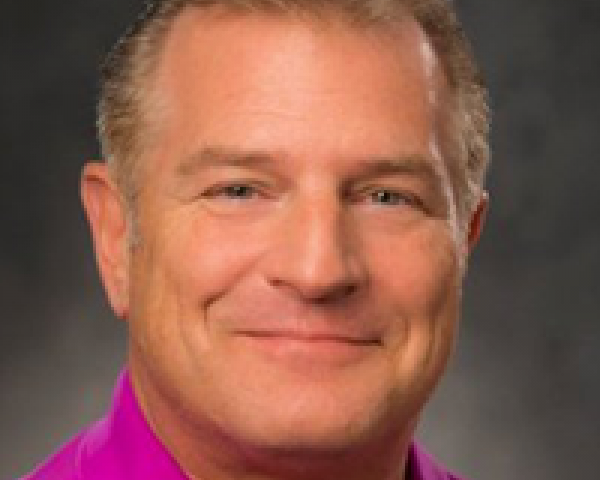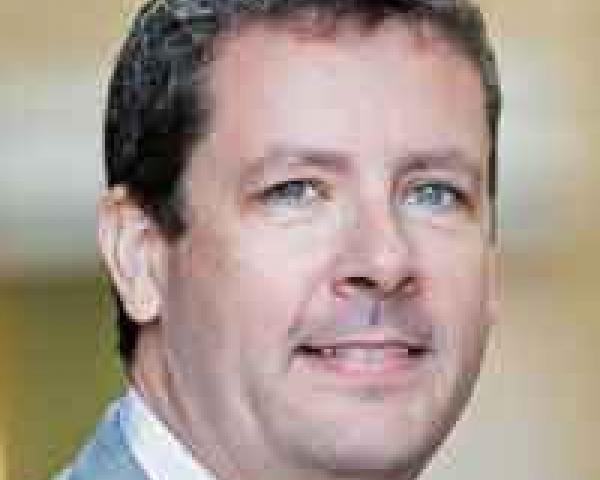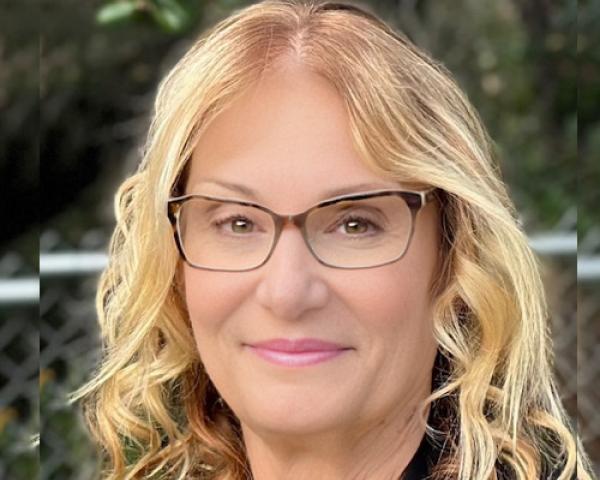Leadership Coaching: Is It For You?
Once dismissed as a fad, leadership coaching has been embraced, and the academic evidence for its efficacy has surged.

Once dismissed as a fad, leadership coaching has been embraced, and the academic evidence for its efficacy has surged.

Get Involved
Our authors are what set Insurance Thought Leadership apart.
|
Partner with us
We’d love to talk to you about how we can improve your marketing ROI.
|

Paul Laughlin is the founder of Laughlin Consultancy, which helps companies generate sustainable value from their customer insight. This includes growing their bottom line, improving customer retention and demonstrating to regulators that they treat customers fairly.
Everyone takes risks at all levels of an organization. How can we make sure they take the right risks and in the right amount?

Get Involved
Our authors are what set Insurance Thought Leadership apart.
|
Partner with us
We’d love to talk to you about how we can improve your marketing ROI.
|

Norman Marks has spent more than a decade as a chief audit executive (CAE) for major companies, with as much as $28 billion in annual revenue. He has implemented risk management, ethics programs and disclosure processes at multiple organizations.
Offering professional administration (PA) of a workers' comp claimant’s future medical funds can help facilitate a settlement.

Get Involved
Our authors are what set Insurance Thought Leadership apart.
|
Partner with us
We’d love to talk to you about how we can improve your marketing ROI.
|

Porter Leslie is the president of Ametros. He directs the growth of Ametros and works with its many partners and clients.
Most of the lessons from the primaries aren't pretty, but they do offer some insights into how to think about modern customers.

Get Involved
Our authors are what set Insurance Thought Leadership apart.
|
Partner with us
We’d love to talk to you about how we can improve your marketing ROI.
|

Deb Smallwood, the founder of Strategy Meets Action, is highly respected throughout the insurance industry for strategic thinking, thought-provoking research and advisory skills. Insurers and solution providers turn to Smallwood for insight and guidance on business and IT linkage, IT strategy, IT architecture and e-business.
The cloud lets insurers innovate by quickly setting up a sort of satellite office -- just in a new cognitive space, not a geographic one.

Get Involved
Our authors are what set Insurance Thought Leadership apart.
|
Partner with us
We’d love to talk to you about how we can improve your marketing ROI.
|

Denise Garth is senior vice president, strategic marketing, responsible for leading marketing, industry relations and innovation in support of Majesco's client-centric strategy.
A shockingly serious proposal is being floated that would have companies announce how fat their employees are, how much they drink, etc.

Get Involved
Our authors are what set Insurance Thought Leadership apart.
|
Partner with us
We’d love to talk to you about how we can improve your marketing ROI.
|

Al Lewis, widely credited with having invented disease management, is co-founder and CEO of Quizzify, the leading employee health literacy vendor. He was founding president of the Care Continuum Alliance and is president of the Disease Management Purchasing Consortium.
With CRM, start by identifying your customers -- policyholders and prospects, for sure, but don't forget your brokers and agents.

Get Involved
Our authors are what set Insurance Thought Leadership apart.
|
Partner with us
We’d love to talk to you about how we can improve your marketing ROI.
|

Mike de Waal is senior vice president of sales at Majesco.
The Oklahoma Option ruling means employers considering locating operations there should sit on the sidelines and wait for clarity.

Get Involved
Our authors are what set Insurance Thought Leadership apart.
|
Partner with us
We’d love to talk to you about how we can improve your marketing ROI.
|

Dan Holden is the manager of corporate risk and insurance for Daimler Trucks North America (formerly Freightliner), a multinational truck manufacturer with total annual revenue of $15 billion. Holden has been in the insurance field for more than 30 years.
More than 200 ultra-productive people defeat procrastination through time travel and say no to almost everything.

Get Involved
Our authors are what set Insurance Thought Leadership apart.
|
Partner with us
We’d love to talk to you about how we can improve your marketing ROI.
|

Kevin Kruse is the author of four books, including the New York Times-, Wall Street Journal- and USA Today-best-seller, "We: How to Increase Performance and Profits Through Full Engagement," and is one of the most-read leadership columnists on Forbes.
Marten Transport had an ROI of 3.7 to 1 in its workers' comp program from baseline testing of employees.

According to the Bureau of Labor Statistics (BLS), the incidence of musculoskeletal injuries (MSD) cases for heavy and tractor-trailer truck drivers increased to 355.4 cases per 10,000 full-time workers in 2014, up from 322.8 in 2013. This is more than three times greater than the rate for all private sector workers.
Companies are faced with increasing exposure from MSD claims, not only from state regulations but from compliance with federal mandates that increase potential exposure for these types of injuries. (The Centers for Disease Control and Prevention (CDC) defines MSD as injuries or disorders of the muscles, nerves, tendons, joints and cartilage as well as disorders of the nerves, tendons, muscles and supporting structures - the upper and lower limbs, neck and lower back - that are caused, precipitated or exacerbated by sudden exertion or prolonged exposure to physical factors.)
Safety will always play a role in mitigating risks, but, no matter how safe an environment, an employer will always have MSD claims. In the transportation industry, the higher rates of injury can be attributed, in part, to several factors.
The nature of the work is one. Many drivers maintain a poor diet, rarely get enough sleep and are sedentary. As a result, they find themselves more susceptible to heart attacks and diabetes, as well as a myriad of strains, sprains and other musculoskeletal disorders.
Additionally, the percentage of older workers is higher in transportation than in most industries, with the Transportation Research Board estimating as many as 25% of truck drivers will be older than 65 by 2025; that translates into more severe musculoskeletal disorder claims.
So, how can a transportation company turn this around and provide a win for all parties? Let's explore through a case study:
Marten Transport is a multi-faceted provider of transportation services offering over the road (OTR), regional, intermodal and temperature-controlled truckload services. The company has 15 operational centers and more than 3,670 employees and contractors. It needed to provide better care for MSD injuries while not accepting liability for injuries occurred outside the scope of work. Marten decided to institute the EFA Soft Tissue Management (EFA-STM) program in February 2015 to determine which injuries were work-related and which were not, as well as to provide better care.
According to Deborah Konkel, the work comp claims manager for Marten, the company uses the EFA-STM "as a fact-finding tool to help us, our employees and their medical providers better understand the nature of their injury and determine the best course of action going forward." Under the EFA-STM program, workers are given a baseline test that is unread; after a reported injury, a second test is conducted. That data is compared with the baseline test to identify the new acute condition, distinct from any pre-existing chronic conditions.
The EFA-STM program is a paradigm shift in workers' compensation because it provides benefits for all stakeholders by accurately separating work-related injuries from those that are not work-related and by providing objective information and, thus, better care for the work-related condition. The key question is what the physical condition of the employee was before the incident and what needs to be done to return him to pre-injury status. EFA-STM provides the required data.
To determine the benefit of the EFA-STM program, Marten's workers' compensation claims data from 2010-2014 was compared with claims data from 2015. The average rate of MSD injuries per 100 hires from 2010-14 was compared with the 2015 rate. The result was a 60% drop in the rate of MSD injuries per 100 hires in 2015. This translated into almost 40 fewer MSD claims in 2015. Using the 2010-14 average cost per MSD claim, the EFA-STM program yielded a direct ROI of 3.7: 1.
"Based on these results, we believe that the EFA-STM program has been a win for all parties involved and a must for companies, especially in the transportation industry" Konkel said.
Get Involved
Our authors are what set Insurance Thought Leadership apart.
|
Partner with us
We’d love to talk to you about how we can improve your marketing ROI.
|

Dr. MaryRose Reaston is the co-founder and CEO of Segen-Health.
She is an expert in diagnostic techniques for the evaluation and management of soft tissue injuries.